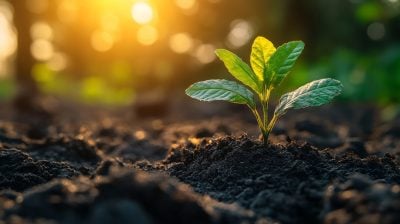Agriculture is still the mainstay of the Kenyan economy, contributing 26% directly and 25% indirectly to the national GDP. Around one million hectares are being brought under irrigation and the strategy under Vision 2030 is to transform the sector from subsistence farming into a profitable business.
Some five million smallholders form the backbone of Kenya’s agricultural sector. More than a third of the country’s agricultural output is exported, forming over 65% of the country’s total exports. The sector provides formal employment to 18% of the workforce but millions more are involved informally.
The sector is made up of four major sub-sectors: industrial crops: tea, coffee, sugar cane, cotton, tobacco, sisal, barley and fruit; food crops: maize, wheat, rice, sorghum, millet, legumes (Irish potatoes are now becoming a very significant food crop); horticulture: vegetables, flowers, nuts and spices; livestock and fisheries: poultry, goats, sheep, cattle, hides and fish.
Industrial crops contribute around 55% of agricultural exports and contribute 17% to GDP. Horticulture has now become the largest sub-sector. The Lake Naivasha area is dominated by huge farms, such as Oserian, Finlays and Karuturi dedicated to floriculture. Karuturi has built schools, medical centres, and playing fields on its grounds and even has its own football team. The main markets of floriculture are in the Netherlands, Scandinavia, France and Germany, with the bulk going to the UK. Small amounts are exported to the Middle East and Asia.
Coffee is grown both on large estates, which produce about 44% of the total output, while smallholders organised in cooperative societies produce the rest.
Tea is also produced on large estates as well as by smallholders. Kenya is the fourth- largest producer of tea in the world and the third largest exporter. This year, tea earned a record Ksh97bn, surpassing horticulture as a foreign exchange earner. This was an increase of 40% over last year’s revenues.
Vision 2030 emphasises value addition to industrial crops. One of the local companies to have excelled in this is Bidco, which produces a variety of soaps and edible oils.
In order to achieve maximum value addition, Bidco put an uninhabited island on Lake Victoria under oil palm cultivation to avoid having to import the raw material from Malaysia. The company’s motto, says CEO Vimal Shah, is “from the soil to the frying pan”. In addition to its plant in Thika, Kenya, Bidco’s palm oil fruits are also processed in Uganda and Tanzania.
“Our goal, by 2030,” says Shah, “is to be able to cover the whole of Africa and take a market leadership position all over the continent.”
Want to continue reading? Subscribe today.
You've read all your free articles for this month! Subscribe now to enjoy full access to our content.
Digital Monthly
£8.00 / month
Receive full unlimited access to our articles, opinions, podcasts and more.
Digital Yearly
£70.00 / year
Our best value offer - save £26 and gain access to all of our digital content for an entire year!
 Sign in with Google
Sign in with Google 


